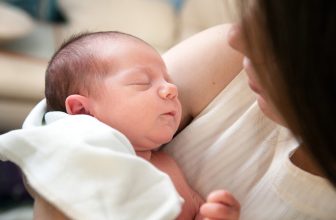In this article, we are going to discuss an important topic that every caregiver should be aware of: safe infant sleep in car seats. As parents or guardians, we always prioritize the safety and well-being of our little ones, and knowing the correct practices for sleep in car seats can help ensure they rest comfortably and securely during those car rides. So, let’s explore the essential information about safe infant sleep in car seats that you need to know.
Understanding Safe Infant Sleep
Importance of safe sleep for infants
Safe sleep is of utmost importance for infants as it plays a crucial role in promoting their overall health and well-being. Infants spend a significant amount of time sleeping, and creating a safe sleep environment ensures that they can rest peacefully without any risks to their health and safety. By practicing safe sleep habits, you significantly reduce the chances of Sudden Infant Death Syndrome (SIDS) and other sleep-related incidents.
Risks associated with unsafe sleeping practices
Unfortunately, unsafe sleeping practices can pose serious risks to infants. Placing an infant in an unsafe sleep environment, such as an adult bed or a couch, increases the risk of suffocation or getting trapped. Soft bedding, pillows, and blankets should also be avoided as they can obstruct the baby’s airway and increase the chances of SIDS. It is crucial to understand and adhere to safe sleeping guidelines to minimize these risks.
The role of car seats in infant sleep
Car seats are designed to keep infants safe while traveling in vehicles, providing protection against accidents and collisions. However, it is important to remember that car seats are for travel purposes only and are not intended as a substitute for a proper sleep environment. While car seats can be convenient during travel, it is essential to understand the appropriate use, potential risks, and safe alternatives for long periods of infant sleep.
Safe Use of Car Seats for Infant Sleep
Infant age and weight requirements for car seat use
It is vital to adhere to the specific age and weight requirements for car seat use. Always follow the manufacturer’s guidelines to ensure that your infant is safely secured in the car seat. Newborns should use rear-facing car seats designed for their size until they meet the weight and height requirements specified by the manufacturer. This will provide the necessary support and protection during travel.
Positioning the car seat correctly
Proper positioning of the car seat is crucial to avoid risks during sleep. Ensure that the car seat is placed in the backseat of the vehicle, facing the rear. This helps reduce the risk of injury in the event of an accident. Additionally, ensure that the car seat is securely fastened using the vehicle’s seat belt or the LATCH system, following the manufacturer’s instructions.
Choosing a car seat with proper support
When selecting a car seat, prioritize those with appropriate support systems designed to provide comfort and safety for your infant during travel. Look for car seats that have a snug and comfortable fit, with adjustable head and body support. This will ensure proper alignment of the baby’s body and minimize the risk of slumping or inadequate head and neck support during sleep.
Ensuring a secure fit in the vehicle
To guarantee a secure fit of the car seat in the vehicle, carefully follow the installation instructions provided by the car seat manufacturer. Ensure that the seat is tightly secured and does not move side to side or forward and backward. A secure fit prevents the car seat from shifting during travel, reducing the risk of injury to the infant.
Avoiding loose straps and harnesses
Always ensure that the straps and harnesses of the car seat are securely tightened around your infant. Loose straps can be dangerous as they may allow your baby to slip or become more vulnerable to injury. Make sure the straps fit snugly over the shoulders, with the chest clip positioned at armpit level.
Checking for recalls or safety issues
Regularly check for any recalls or safety issues associated with your car seat. Stay informed about potential product recalls and ensure that your car seat meets all current safety standards. Manufacturers may issue safety recalls to address any design or manufacturing defects that could compromise the safety of the car seat.

Potential Risks and Concerns
Increased risk of positional asphyxiation
Leaving an infant unattended in a car seat for extended periods can lead to an increased risk of positional asphyxiation. This occurs when an infant’s head falls forward and restricts their airway, potentially causing breathing difficulties or suffocation. It is vital to monitor your baby’s position and ensure their airway remains open and unobstructed.
Inadequate head and neck support
Car seats are not designed for extended sleep, and infants may experience inadequate head and neck support while sleeping in a car seat. This can put excessive strain on their neck muscles, potentially causing discomfort or even posing a safety risk. It is important to provide additional support, such as using rolled-up receiving blankets or specially designed headrests, to maintain proper alignment and alleviate any discomfort.
Temperature regulation challenges
Infants may face challenges in regulating their body temperature while sleeping in a car seat. Car interiors can become excessively hot or cold, leading to discomfort and an increased risk of overheating or hypothermia. It is essential to monitor the temperature and dress your baby appropriately for the weather conditions to ensure their comfort and well-being.
Impact on physical development
Extended periods of sleep in a car seat can potentially hinder an infant’s physical development. Spending excessive time in a seated position can put pressure on their developing spine and musculoskeletal system, causing postural issues or delays in achieving important motor milestones. Providing ample opportunities for active play and unrestricted movement outside of the car seat is crucial for your baby’s physical development.
Alternatives to Car Seat Sleep
Importance of transitioning to a safe sleep environment
While car seats can be a convenient option for travel, it is important to transition your infant to a safe sleep environment as soon as possible. Car seats are not designed for long periods of sleep, and prolonged use can pose risks to your baby’s health and development. Creating a safe and comfortable sleep environment, such as using a crib or bassinet, should be a priority.
Using a crib or bassinet for newborns
For newborns, cribs or bassinets are the safest sleep options. These sleeping surfaces are designed specifically for infants, providing a flat and firm surface that promotes safe sleep. Always ensure that the crib or bassinet meets current safety standards and follow safe sleep practices, such as placing the baby on their back to sleep and avoiding the use of pillows, blankets, or loose bedding.
Using a firm and flat sleep surface
Regardless of the sleep environment chosen, it is important to provide a firm and flat sleep surface for your baby. Soft mattresses or cushions can increase the risk of suffocation or SIDS. Choose a mattress that fits snugly in the crib or bassinet, without any gaps around the edges, to ensure a safe sleep environment for your little one.
Considerations for traveling
Even when traveling, it is important to prioritize safe sleep practices for your infant. If possible, bring a portable crib or bassinet that meets safety standards. Additionally, if you must rely on car seats for sleep, ensure that breaks are taken frequently, allowing your baby to stretch and move around. Never leave your baby unattended in the car seat, and provide adequate supervision to ensure their safety.

Recognizing Signs of Unsafe Sleep
Signs of potential breathing problems
It is important to be vigilant and recognize signs of potential breathing problems during your baby’s sleep. Look for irregular breathing patterns, loud or raspy breathing sounds, or prolonged pauses in breathing. If you suspect any issues with your baby’s breathing, seek medical attention promptly.
Unusual head tilt or slumping in the car seat
Keep an eye out for any unusual head tilts or slumping in the car seat. If your infant’s head is consistently falling forward, restricting their airway, it may indicate an unsafe sleep position. Adjust the position of the car seat or provide additional support to ensure your baby’s head remains in a safe and comfortable position.
Excessive sweating or overheating
Babies have a limited ability to regulate their body temperature, making them susceptible to overheating. Excessive sweating or flushed skin may be signs that your baby is too warm. Ensure that the car interior is appropriately cooled or heated, depending on the weather conditions, and dress your baby in breathable clothing to promote temperature regulation.
Inconsolable crying or discomfort
If your baby seems inconsolable or displays signs of discomfort while in the car seat, it may indicate that they are experiencing discomfort or distress. Discontinue the use of the car seat for sleep and create a safe sleep environment where your baby can rest comfortably.
Promoting Safe Sleep Habits
Back to sleep position
Always place your baby on their back to sleep, whether in a crib, bassinet, or an appropriate sleep surface. This position has been proven to reduce the risk of SIDS. It is important to note that once your baby is capable of rolling over independently, you do not need to reposition them if they assume a different sleeping position.
Avoiding blankets, pillows, and soft bedding
To minimize the risk of suffocation or SIDS, avoid placing blankets, pillows, or soft bedding in your baby’s sleep environment. These items can obstruct your baby’s airway and pose a safety hazard. Instead, dress your baby in a sleep sack or wearable blanket to keep them warm without the risk of loose bedding.
Maintaining a comfortable room temperature
Ensure that the room where your baby sleeps is maintained at a comfortable temperature. It is recommended to keep the room between 68-72°F (20-22°C) to prevent overheating or excessive cooling. Use a room thermometer to monitor the temperature and adjust bedding or clothing as needed to keep your baby comfortable.
Creating a calming sleep environment
Establish a calming sleep environment for your baby by minimizing noise, using dim lighting, and incorporating soothing routines. Consistency and predictability in the bedtime routine can help signal to your baby that it is time to sleep. Avoid bright lights or stimulating activities before bedtime to promote a peaceful sleep environment.

Educating Caregivers and Parents
Providing information on safe sleep practices
Educating caregivers and parents about safe sleep practices is essential in ensuring the well-being of infants. Healthcare professionals, including pediatricians and nurses, should provide comprehensive information and guidelines on safe sleep measures. This includes sharing materials such as brochures, videos, and demonstrations that highlight safe sleep practices and the potential risks of unsafe sleeping habits.
Car seat safety guidelines and recommendations
When providing education on infant sleep, it is important to specifically address car seat safety guidelines. Emphasize the appropriate use of car seats for travel purposes only, and discuss the potential risks associated with extended periods of sleep in car seats. Encourage caregivers and parents to prioritize safe sleep practices and educate them on the alternatives available.
Resources for further information and support
It is crucial to provide caregivers and parents with additional resources for further information and support. This can include directing them to reputable websites, such as those of healthcare organizations or government agencies, where they can find comprehensive information on safe infant sleep. Encourage them to reach out to healthcare professionals for any specific concerns or questions related to safe sleep practices.
Ensuring Compliance with Safety Standards
Understanding safety regulations for car seats
To ensure compliance with safety standards, it is important to understand the regulations and guidelines set forth by relevant authorities. Familiarize yourself with the safety regulations specific to car seats, including age, weight, and height requirements, as well as installation guidelines. Staying updated on any changes in safety regulations will help you make informed choices when purchasing and using car seats.
Checking for proper certification and labeling
When selecting a car seat, carefully check for proper certification and labeling. Look for certifications from recognized safety organizations, such as the Juvenile Products Manufacturers Association (JPMA) or the National Highway Traffic Safety Administration (NHTSA). Additionally, read and follow the manufacturer’s instructions for installation and use.
Avoiding secondhand or expired car seats
To ensure the safety of your infant, it is crucial to avoid using secondhand or expired car seats. Car seats have an expiration date provided by the manufacturer, and using an expired seat may compromise its effectiveness and safety. Additionally, secondhand car seats may have been involved in accidents or have undergone wear and tear that is not visible.
Addressing Common Misconceptions
Car seats as a substitute for cribs
One common misconception is that car seats can serve as a substitute for cribs or other safe sleep environments. It is important to emphasize that car seats are specifically designed for travel and should not be used as a primary sleep surface. Babies need a firm and flat sleep surface to reduce the risk of SIDS and promote their overall health and development.
Belief in increased vehicle safety during sleep
There is a misconception that car seats offer increased safety when infants sleep in moving vehicles. While car seats are crucial for protecting infants during travel, the safety features are optimized for collision scenarios. Sleeping in a car seat that is not properly positioned or secured can actually pose risks to the baby’s health and safety. Communicate that it is essential to prioritize proper sleep environments and adhere to safe sleep practices.
Misunderstanding the risks of improper positioning
Improper positioning of infants in car seats can be a common mistake made by caregivers. Not realizing the potential risks, such as the head falling forward and obstructing the airway, can put the baby at risk of breathing difficulties or suffocation. Educating caregivers about the importance of correct positioning and providing them with guidance on maintaining a safe sleep position is crucial to reduce the occurrence of such incidents.
Conclusion
Prioritizing safe sleep for infants is of utmost importance to ensure their well-being and reduce the risk of sleep-related incidents. While car seats play a vital role in providing protection during travel, it is crucial to understand their limitations for extended periods of sleep. By adhering to safe sleep practices, such as placing infants on their back to sleep in a crib or bassinet, avoiding loose bedding, and maintaining a comfortable sleep environment, we can create a safe and nurturing environment for our little ones. Continuous evaluation, education, and communication of safe sleep practices are essential in promoting the health and safety of infants.








